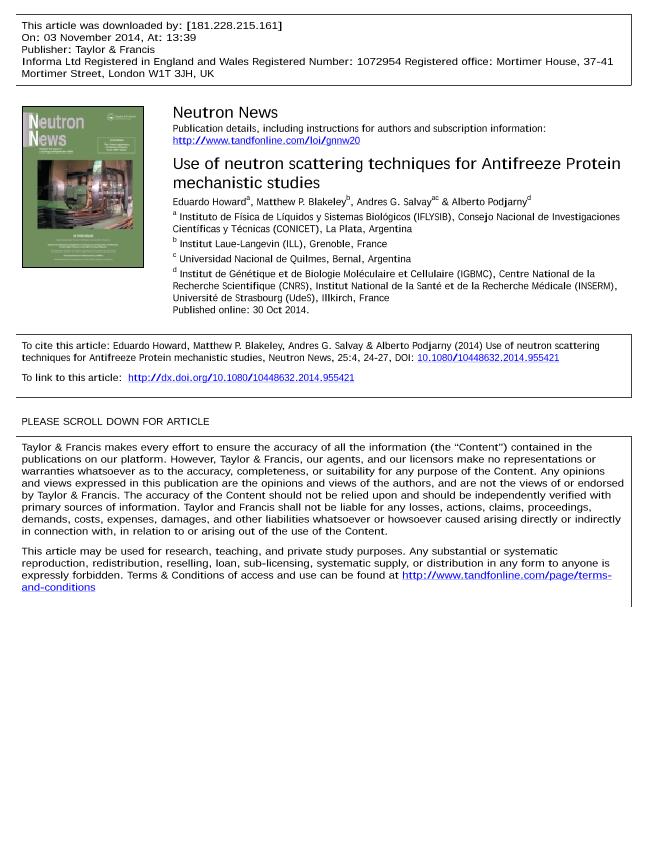Artículo
Use of neutron scattering techniques for Antifreeze Protein mechanistic studies
Fecha de publicación:
10/2014
Editorial:
Taylor & Francis
Revista:
Neutron News
ISSN:
1044-8632
Idioma:
Inglés
Tipo de recurso:
Artículo publicado
Clasificación temática:
Resumen
Antifreeze proteins (AFP) have evolved in organisms living in sub-zero temperatures to avoid freezing of internal fl uids. They bind to ice nuclei lowering the freezing point and inhibiting recrystallization [1]. Even though this protein has been thoroughly studied, including several structures determined by X-ray crystallography, the exact mechanism of binding of ice to the largely hydrophobic Ice Binding Surface (IBS), (i.e. the region of the protein involved in the ice recognition) has remained unclear. In particular, the study of the hydration layers around the protein using X-ray crystallography did not provide a model of the IBS-ice interface.
Archivos asociados
Licencia
Identificadores
Colecciones
Articulos(IFLYSIB)
Articulos de INST.FISICA DE LIQUIDOS Y SIST.BIOLOGICOS (I)
Articulos de INST.FISICA DE LIQUIDOS Y SIST.BIOLOGICOS (I)
Citación
Howard, Eduardo Ignacio; Blakeley, Matthew P.; Salvay, Andrés Gerardo; Podjarny, Alberto Daniel; Use of neutron scattering techniques for Antifreeze Protein mechanistic studies; Taylor & Francis; Neutron News; 25; 4; 10-2014; 24-27
Compartir
Altmétricas




